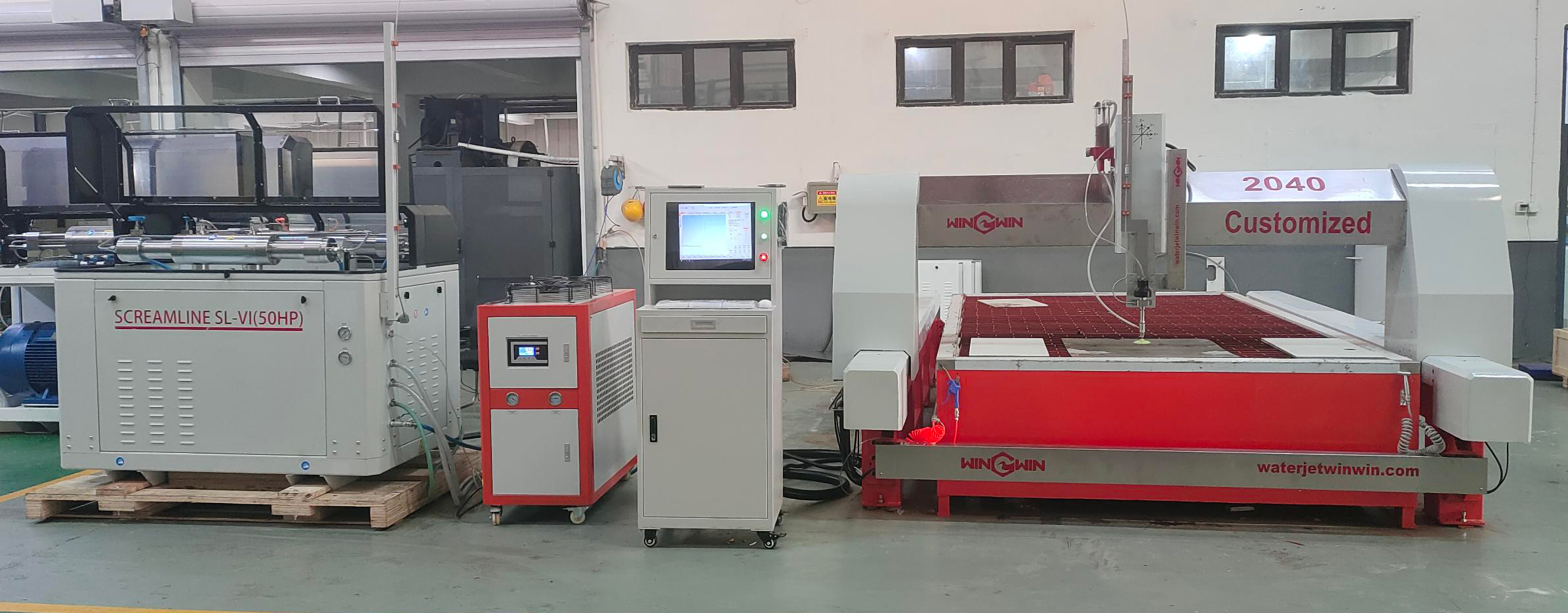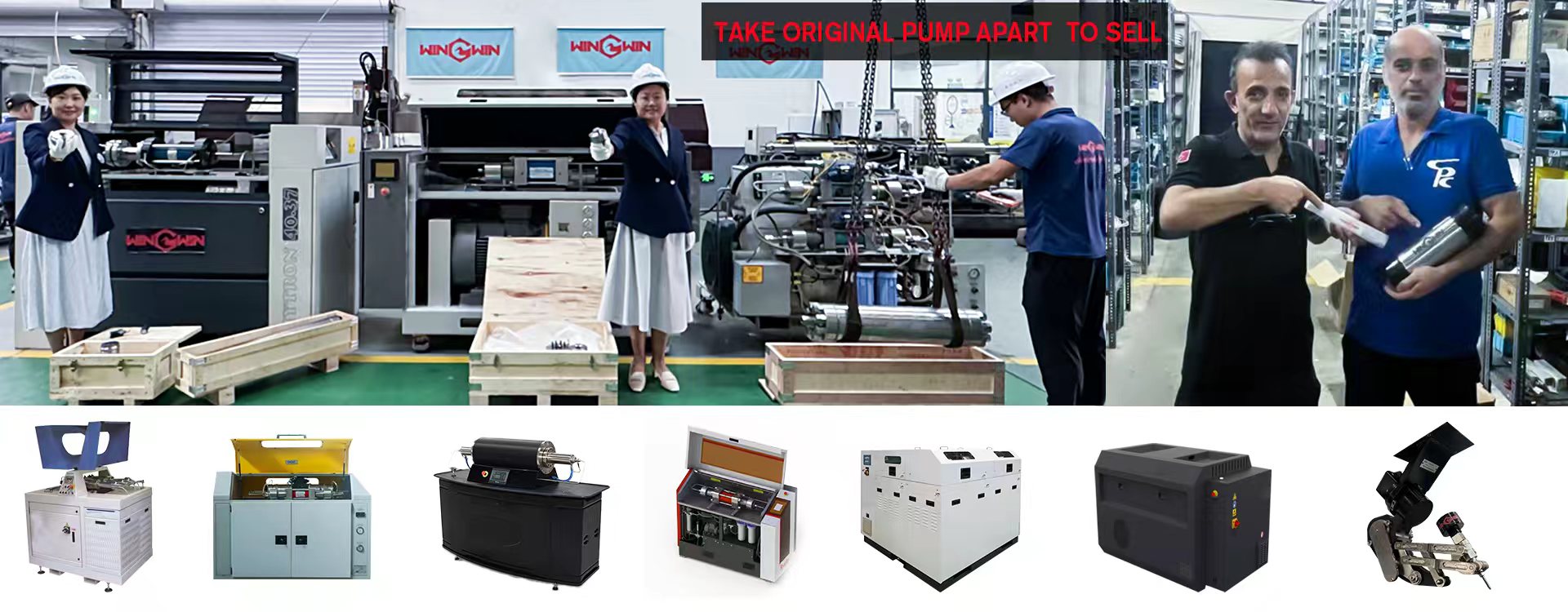Waterjet Cutting vs. Laser Cutting: Exploring the Differences in Precision, Speed, and Results
Waterjet cutting and laser cutting are two important cutting technologies in modern manufacturing, but they have significant differences in principle, material applicability, processing effect, cost and application scenarios. As a leading provider of high-pressure waterjet solutions, WINWIN Waterjet has long been committed to advancing waterjet cutting technology, offering tailored solutions that leverage the unique strengths of this cold-cutting process. The main differences between the two technologies are as follows:

1. Cutting Principles
Waterjet cutting is essentially a cold cutting process that uses high-pressure water to cut materials. It can be divided into pure waterjet cutting and abrasive waterjet cutting. Pure waterjet cutting is primarily used for cutting relatively soft materials such as rubber, foam, food, and paper. Abrasive waterjet cutting mixes hard abrasive particles in the water; high-pressure water serves as a carrier, propelling the abrasive particles at high speed to impact the material surface, achieving cutting through micro-machining and erosion.
Laser cutting is essentially a thermal cutting process that uses a high-energy density, highly focused laser beam to irradiate the material surface. Through the photothermal effect, the material rapidly melts, vaporizes, or reaches its ignition point. At the same time, auxiliary gases such as oxygen, nitrogen, or air are used to blow away the molten material or assist combustion, forming a cutting seam.
2. Applicable Materials
The greatest advantage of waterjet cutting is that it can cut almost any material, including metals, composites, stones, tiles, glass, plastics, rubber, foam, flammable materials, food, etc.
The applicability of laser cutting is limited by the material properties. It is good at cutting medium and thin metal plates, but its efficiency and quality will significantly decrease when cutting thick metals. It can also cut some non-metallic materials, such as plastics, wood, acrylic, leather, paper, etc., but it has difficulties in processing some special materials, such as PVC, certain composites, and transparent materials.
3. Cutting Quality and Thickness
Waterjet cutting has a very wide range of cutting thicknesses, with relatively wide kerfs. The cut surface is usually a frosted finish. The precision and edge perpendicularity are generally not as good as those of laser cutting for thin plates. However, it can still effectively cut extremely thick materials, though at a slower speed. One of the core advantages of waterjet cutting is that there is almost no heat-affected zone (HAZ), and the material will not be damaged due to heat.
Laser cutting features narrow kerfs and high precision, making it particularly suitable for fine cutting and complex contours. It has a speed advantage in the medium and thin plate range. However, as the thickness increases, the cutting speed drops sharply and the kerf quality deteriorates. The heat-affected zone (HAZ) may affect material properties, cause deformation, or require subsequent processing for removal.
Overall, if the material is heat-sensitive, very thick, or cannot be cut by laser, waterjet cutting should be chosen. If the main task is to cut thin metal sheets, with a focus on speed and precision and the heat effect can be tolerated, then laser cutting is the better option. Both waterjet cutting and laser cutting have their own advantages, and WINWIN Waterjet stands at the forefront of waterjet technology, empowering industries with reliable, high-performance cutting solutions that harness the cold-cutting benefits of waterjet systems for even the most challenging materials and applications.

 wwaterjet
wwaterjet